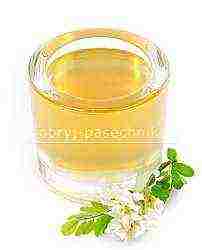Content
- 1 Fodder beets: planting and care
- 2 Fodder beet varieties
- 3 Biological description
- 4 Fodder beets: cultivation features (video)
- 5 The best varieties
- 6 Landing terms and rules
- 7 Collection and storage
- 8 Can people eat fodder beets?
- 9 How to plant beets (video)
- 10 Reviews and comments
- 11 A bit of history
- 12 Fodder beet varieties
- 13 Features of crop rotation
- 14 Getting seeds
- 15 Soil preparation
- 16 Fertilization
- 17 Planting fodder beets
- 18 Care features
- 19 Harvesting
- 20 The history of the emergence of fodder beet
- 21 Popular varieties of fodder beets
- 22 Growing technology
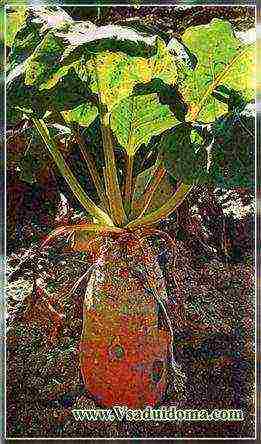 Fodder beets are an unpretentious, high-yielding plant rich in fiber, pectin, dietary fiber, mineral salts, digestible carbohydrates and protein.
Fodder beets are an unpretentious, high-yielding plant rich in fiber, pectin, dietary fiber, mineral salts, digestible carbohydrates and protein.
She helps out precisely in winter, when the animals are mainly fed with canned and dry food. And not only for rabbit breeders, but also for those who keep dairy cattle, this milk-producing vegetable is a real salvation. It is also desirable for suckling sows, as it has a beneficial effect on their milk production.
Root crops are given whole and cut. 1 kg of feed beet contains 0.12 feed units and 10 g of digestible protein.
Cows can be fed up to 35 kg or more of beets per day per head. At a dose of more than 40 kg, milk has an unpleasant taste and fat content decreases. Sheep eat up to 5 kg of beets per day; pigs - up to 7 kg per 100 kg of live weight; working horses -15 kg. Pigs are fed fodder beets (20% by volume) in a mixture with potatoes (40%), green pulses (30%), hay (10%), or in a mixture (30%) with corn cobs (50%) and green mass alfalfa (20%). The nutritional value of the first mixture is 0.29 feed units, 26 g of digestible protein, the second - 0.3 feed units and 21 g of protein.
Beet tops are also good food for goats. An adult goat is given 3-4 kg of tops per day (usually at night), adding chalk to the green mass to neutralize acidity (1 g per 1 kg of tops). For lactating goats with a daily milk yield of 3 liters per day, feed mixtures are prepared.
Reference by topic: Growing and harvesting beets
Fodder beets: planting and care
It is better to plant beets after rye, barley, alfalfa, phacelia and legumes.
Seeds are sown when the soil warms up to 8 °. It is better to plow or dig up the beds (beets need a deep arable layer) and fill them with mineral fertilizers in the fall. The compost is applied in spring, while simultaneously destroying weeds and cultivating the soil.
Since the root crops reach a weight of 12 kg and grow large, with a powerful rosette of leaves, the seeds are sown to a depth of 3-5 cm at the rate of 6-8 pcs / sq.m in rows with a row spacing of 50 cm. Seedlings with two true leaves are thinned out, leaving the strongest , and increasing the distance in the row between plants up to 25 cm.
If there is little spring moisture in the soil, the spring is hot and dry, it is necessary to organize watering of the crops so that the beets will grow together. On an area of up to 20 acres, you can use non-woven material. The canvas is laid directly on the beds and pressed down with any load - stone, brick, boards, lumps of earth.
Further watering is carried out according to the weather. Moisture is especially needed during the formation and growth of the root crop. But a month before digging the harvest, watering is completely stopped, otherwise the root crops will be poorly stored and contain less sugars. In a rainy autumn, slots are cut in the aisles with a shovel to drain water.
It is also important to combat soil crust (lack of oxygen is detrimental to seedlings) and weeds. Therefore, a few days after sowing, the soil is loosened.Weeding is carried out several times during the growing season until the tops are closed. Surface loosening with a flat cutter is desirable after every rain.
After thinning the seedlings, fodder beets are fed with a complex fertilizer, and also watered under the root of HB 101 and Extrasol, Fitosporin or Florovit ZR. The second time feeding is carried out two weeks later.
The accumulation of nutrients occurs mainly in the fall. Beets are harvested when the lower leaves turn yellow. This must be done before the first autumn frosts: in fodder beets, the roots protrude by a third or half above the ground, and if they freeze, they will not be stored.
The beets are carefully poured in with a pitchfork, allowed to dry, the growing point is cut off with tops and the roots are put into plastic bags, and then transferred to the cellar. If there are a lot of beets, the roots are placed in a pile, protecting its base and sides from rodents with a net or slate.
See also: Table beets - cultivating varieties and planting
Fodder beet varieties
From old varieties, seeds of varieties are still popular and sold Galician, Ekendorf yellow and Lvov. The new varieties are distinguished by high yield, quality and disease resistance.
Lada - a high-yielding variety of the fodder type. The root crop is oval-cylindrical, white and pinkish-white, submerged in the ground by a third. The pulp is dense, juicy, white. The variety is low-flowered, resistant to cercosporosis, clump rot during storage. A healthy leaf apparatus is preserved until the very harvest. Average yield 1200 kg / ha.
Hope - a single-sprout variety of fodder beet for the North-West, Middle Volga and Far East regions. The root crop is red, oval-elongated. The leaf is green with a weak anthocyanin coloration. The head is small, convex, gray. The color of the pulp is white. Submersion into the soil 3.4 points. The yield is much higher than the standard. Powdery mildew and cercosporosis are moderately affected.
Milan - a simple single-seeded triploid hybrid of fodder beet for the Central Black Earth region. The root crop is oval, of medium length and width, deep in the soil. Below the soil level it is white, above the ground it is green. Average yield of root crops 784 kg / ha, resistant to cercospora.
Vermont - simple single-seeded triploid hybrid for the Central region. The root crop is cylindrical-conical, of average length and width, the position in the soil is average. The color of the root crop is white below the soil level, above it is green. The average yield of root crops is 878 c / ha.
Jamon - single-seeded triploid hybrid for the Central and Central Black Earth regions. The leaf is of medium length, medium width and wide, green. The petiole is short. The root crop is cylindrical-conical. The color of the root crop is yellow-orange below the soil level, above it is orange. The average yield is 83.4 c / ha. Weakly affected by cornea, medium - by cercospora.
Starmon - a simple single-seeded triploid hybrid for the Central Black Earth Region. The rosette is semi-erect, the leaves are long with white veins. The root crop is conical, the aboveground part is green, the underground part is yellow. The average yield of root crops is 692 c / ha.
On a note:
In addition to fodder beets, animals are fed sugar beets. Sugar beet is poor in protein, but in terms of dry matter content is 1.5-2 times higher than fodder, it is rich in sugars and minerals, especially potassium, iron, manganese. 1 kg of sugar and semi-sugar beets contains, respectively, 0.24-0.17 feed unit and 13 g of digestible protein. However, adding 25-30% of this beet to the diet of fattening pigs increases the taste and quality of the meat.
Meat cows give it up to 15 kg per day, dairy animals - at the rate of 2-3 kg per 1 liter of milk. The disadvantage of sugar beets in comparison with fodder beets is more laborious harvesting and poor cleaning of the roots from dirt.Feeding 25 kg of poorly washed sugar beets to cattle can lead to severe digestive upset. Therefore, dairy cattle are given no more than 8 kg of sweet root crops per day, evenly distributing them for each feeding.
Below are other entries on the topic "Cottage and garden - do it yourself"
Growing beets in the Orenburg region - planting and care: Beets in the South Urals - ... When to harvest sugar beets: Harvesting sugar beetsHigh prices ... Storing root crops - the best ways: How to store root crops - features ... Beetroot seedlings (so as not to thin out): We plant beets with seedlings so as not to ... Top dressing of root crops - advice and feedback from readers: Top dressing for root crops - recipes ... Harvesting beets: Beets: harvesting Young beets are eaten ... Growing and harvesting beets: Beets - how to grow and ...
Subscribe to updates in our groups.
Let's be friends!
Fodder beets are juicy fodder for farm animals. It is characterized by a high juice content and good taste, and its regular inclusion in the diet of animals helps to improve the digestion and assimilation of hay, hay, concentrates and silage.
Root crops are fed to cattle, pigs, sheep and other animals from the moment the beets ripen, from autumn to spring. In particular, the ration for pigs should consist of at least a quarter of fodder beets. For feeding, both silage and fresh beets are used.
Biological description
This vegetable is a two-year-old crop belonging to the family of Hinges. In a year, the vegetable forms a root crop and a rosette consisting of root leaves, and in the second, vegetative shoots are formed, which will give seeds and fruits.
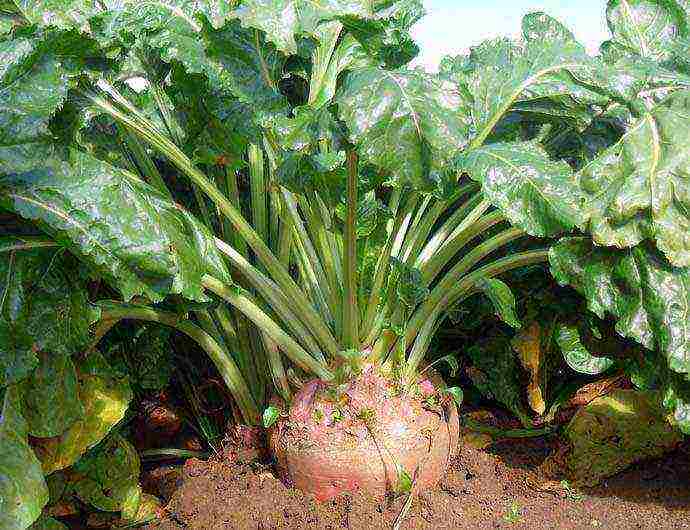
Fodder beets, depending on the varietal type, can have different colors:
Also read: Potatoes "Lapot": champion among varieties
Root crops contain up to 89% of water, about 1% of ash and protein, fats, fiber, protein and BEV. There are up to 15 feed units per centner of the product, up to half a kilogram of protein and 40 grams of phosphorus and calcium.
In addition, the fodder beet contains a lot of vitamins, acids, salts, necessary for the normalization of digestive and metabolic processes, as well as contributing to an increase in the productivity of farm animals.
Fodder beets: cultivation features (video)
The best varieties
Most often, farmers choose the following beet varieties for cultivation:
- "Centaur Poly";
- Eckendorf Yellow;
- "Oberndorf red".
The vegetable has a taproot that can penetrate the soil up to 2.8 meters. The overwhelming part of the root system of beets is located in the upper layers of the soil (up to 50 cm in depth). According to the description of the shape of the vegetable and the depth of immersion of its root in the soil, the following varieties are distinguished.
Cylindrical vegetables, in which from a quarter to 40% of the length falls on the underground part:
- Arnim Krivenskaya;
- Eckendorf yellow;
- hybrid - Urozhainy and Timiryazevsky 156.
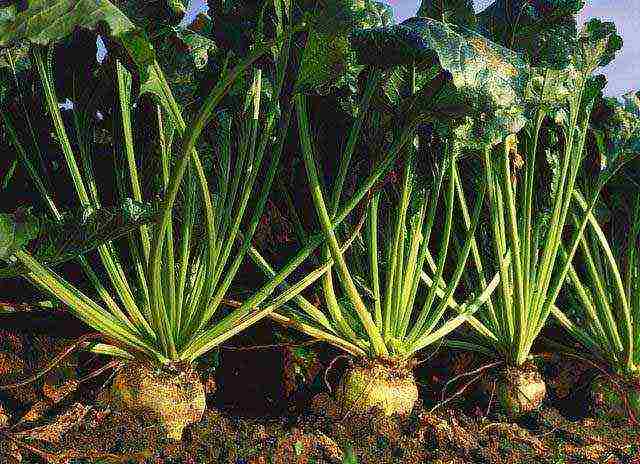
Conical vegetables with no more than 20% above the ground:
- Poltava White;
- Firstborn;
- Semi-sugar white;
- Timiryazevsky 12 (hybrid).
Vegetables that look round, spherical, slightly flattened, protruding up to half above the soil surface:
- Sugar round 7 and 0143;
- Start.
An oval-elongated vegetable, more than half of the size of which is immersed in the soil:
- North Orange 1033;
- Winner;
- Siberian orange;
- Barres.

Landing terms and rules
The culture is very demanding on soil fertility, therefore, strict crop rotation must be observed in the fields where it is planted. The best yield is observed when sowing beets after:
- legumes;
- rye;
- winter cereals;
- corn.
Seeds are obtained in the second year of root crop growth, but exceptionally healthy, elastic vegetables without signs of spoilage are suitable for this. The process of obtaining seeds is:
- digging up root crops after the stalk has dried;
- hanging the vegetable in a windless and dry place until the stem is completely dry;
- after that, the seeds are carefully collected and stored until the right moment in paper bags.
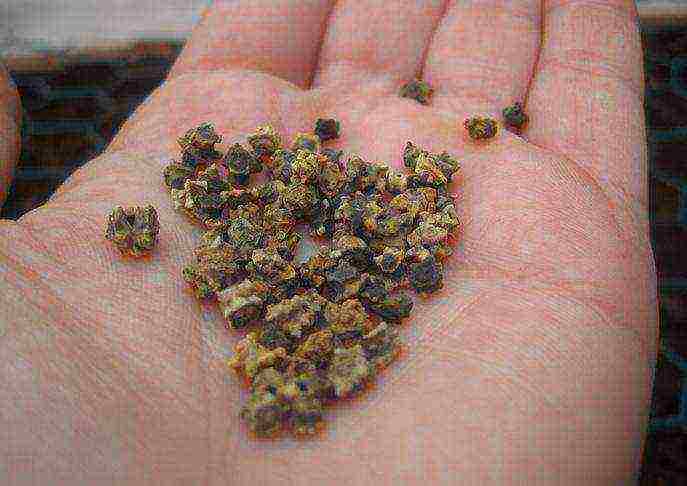
Soil requirements
Root crops are demanding on the quality of the soil: stony, swampy, sandy, swampy soils are unsuitable for their cultivation. Chernozem and floodplain soil is considered ideal. Presowing preparation of the land consists in:
- removing weeds and digging up the earth;
- fertilization - in the fall, compost is applied (5 tons per hectare) or ash (5 centners per hectare);
- immediately before sowing, the fields are plowed with the addition of nitroammophoska.
In addition, potash and phosphate fertilizers are added, which are necessary for the growth and ripening of vegetables. After carrying out all the manipulations, the soil should be moist, loose, fine crumbly.
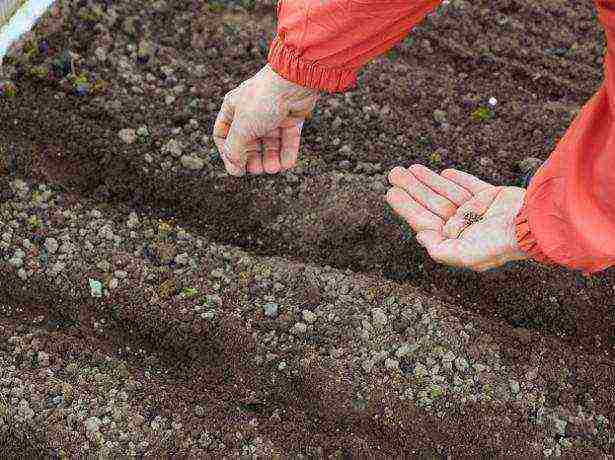
Landing rules
The growing season for root crops is long - 120-150 days, therefore, planting begins after warming up the soil at a depth of 10-12 cm to 6-7 degrees. This time falls on the end of March - beginning of April.
Before planting, the seeds are disinfected (soaked for half an hour in a manganese solution) and are treated with substances that stimulate growth. After that, the material is dried.
Sowing takes place according to the following algorithm:
- furrows are formed on the field with a distance of half a meter;
- the culture is sown into the soil to a depth of 2.5 to 4.5 cm;
- an approximate calculation of the number of seeds - 150 grams per hundred square meters;
- the beds are sprinkled on top with soil and, if the soil is dry, leveled with a roller.
The first shoots can be expected in 4 days if the temperature exceeds 15 degrees and in 12 days if the average daily temperature is about 8 degrees.
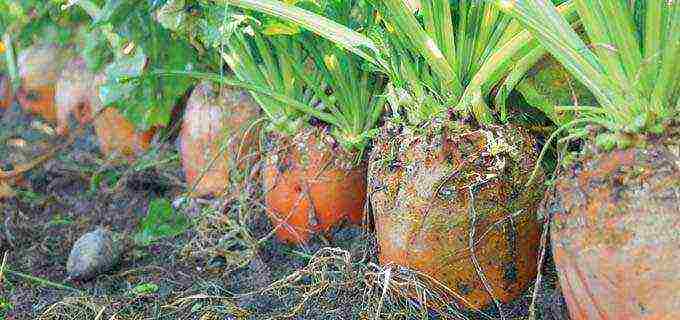
Care features
After germination, vegetables develop slowly. At this time, it is important to carry out thinning after the appearance of several leaves: on each running meter of the sown area, no more than 5 sprouts should be at an equal distance from each other, this is considered the norm.
After thinning, the culture is fertilized with ammonium nitrate, the same procedure is repeated after two weeks. Getting a good harvest is influenced by timely weeding, if it is not carried out, there is a great risk of missing up to half of the possible harvest.
Beets are moisture-loving, so they should be watered regularly, especially during the period of leaf formation. For light granulometric soils, the average moisture content should reach 72-75%, and for heavy soils - up to 80%. Watering is limited or stopped one month before harvesting.

Collection and storage
Closer to the onset of autumn, the vegetable stops forming new leaves, and the old ones turn yellow and die off. The root crop stops growing. Harvesting is carried out by digging in grown vegetables.
To keep the fodder beets longer, they are cleaned of soil, the leaves are removed and placed in a cellar or a deep hole in the ground. The optimum temperature at which the shelf life is maximum is 3-5 degrees Celsius.
Can people eat fodder beets?
The fodder beet tops and the root crop itself are included in the diet:
- pigs, boars and piglets (over 3 months of age);
- cows and young animals;
- goats;
- chickens;
- rabbits;
- cattle and other farm animals.
How to plant beets (video)
Human consumption of fodder beets is not shown because they are too heavy to digest and assimilate. For consumption, it is advisable to choose sugar varieties of root crops.
Fodder beets are grown almost everywhere and play an important role in providing nutrition for farm animals. Today in Russia 46 hybrids and varieties of this root crop are grown.
Attention, only TODAY!
Reviews and comments
Did you find a mistake in the text? Please select it and press Ctrl + Enter. Thank you!
Rating:
(
estimates, average:
out of 5)
Beetroot is an extremely healthy vegetable used for animal feeding. It bears the greatest value for dairy cattle, being a wonderful means of increasing milk yield in cows and goats.
In the winter season, when the diet of animals consists mainly of canned and dry feed, beetroots are able to fill the need for trace elements and vitamins. In summer, in addition to root crops, it is used for food and tops.
Fodder beet is an unusually healthy vegetable, which contains a huge amount of pectin and minerals, vitamins and easily digestible carbohydrates. This is a biennial plant, the fruits of which can reach 15 kg.
A bit of history
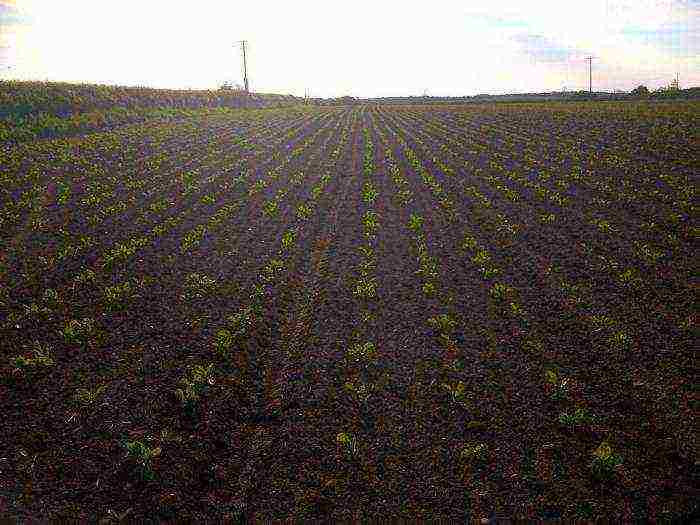 Fodder beets, along with table and sugar beets, are derived from wild beets that grow in North Asia and the Far East. Initially, this culture was not divided into subspecies, and therefore there was only one name - beet. The history of the emergence of the fodder variety as an independent agricultural culture goes back to the 16th century, in Germany.
Fodder beets, along with table and sugar beets, are derived from wild beets that grow in North Asia and the Far East. Initially, this culture was not divided into subspecies, and therefore there was only one name - beet. The history of the emergence of the fodder variety as an independent agricultural culture goes back to the 16th century, in Germany.
German peasants at that time noticed that if a cow was fed with beets, then her milk yield significantly increased, and the milk itself became much tastier. It is this time period that it is customary to associate with the emergence of such a culture as fodder beet. Soon, specialists began to study this phenomenon. And since the beginning of the 18th century, fodder beets have flooded all European countries.
Fodder beet varieties
Beetroots grow in a wide variety of colors, shapes and degrees of immersion in the ground. Depending on the specified parameters, fodder beets are subdivided into the following varieties:
- The conical shape of the vegetable, in which up to 80% of the root length is located underground (Umanskaya semi-sugar beet, Poltava semi-sugar beet);
- Elongated oval shape of a vegetable when 50-70% of its length is in the soil (Winner);
- The cylindrical shape of the vegetable, when 25 to 40% of the length is located underground (Ekkendor yellow beet, Poltava white);
- The rounded shape of the vegetable, in which most of the root vegetable is on the surface.
The stronger and better developed the aboveground part of the root crop, the more easily the vegetable tolerates drought. The most popular varieties of fodder beet: Eckendorf yellow, Tsentaur Poly, Oberndorf red.
Features of crop rotation
In fodder crop rotations, the best predecessors of fodder beets are cereal-leguminous mixtures, corn for silage, melons and gourds. In field crop rotations, it is recommended to plant beets in places where annual legumes, row crops and winter crops were previously located.
As practice shows, the best yields of fodder beet were obtained when rye, wheat, peas, corn and vegetables were located in the place of this crop last year. Do not place fodder beets after various perennial grasses. It is allowed to return this crop to its former field no earlier than after 3 years.
Getting seeds
Beetroot is one of those plants, the seeds from which can be obtained no earlier than in the 2nd year of cultivation. In the first year, it forms tops and root crops, and the next year, when planting a vegetable, you can get fodder beet seeds suitable for growing plants.
It is very important that the roots that will be used for seeds are firm and healthy. When the beet stalk begins to dry out, the vegetable is dug up and then hung in a dry place protected from the wind. In such conditions, the beets should be kept until the stem of the plant is completely dry. After that, the seeds should be picked and dried in a small paper bag.
Soil preparation
Cultivation of fodder beets is a rather complicated process that requires certain knowledge and skills. So, it is important to know that growing this vegetable on sandy, waterlogged and clayey soils will not bring positive results.Stony soils are also unsuitable for the growth of root crops.
Favorable for obtaining a good harvest of fodder beet is considered to be lands with a slightly acidic, neutral reaction and weakly solonetsous soils. Ideally, this vegetable is planted in floodplains and rich black soil.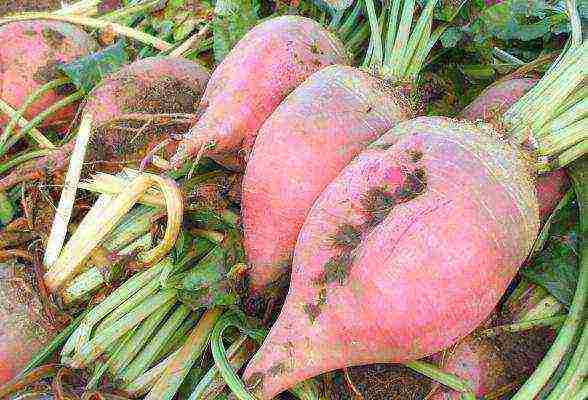
The plant is very demanding on the fertility of the land, and therefore it is impossible to do without preliminary improvement of the soil. Only with timely preparation of the land can one expect the emergence of friendly shoots. So, fodder beets, the cultivation of which is familiar to many farmers, requires soil preparation at the initial stage of planting.
It is necessary to clear the area overgrown with weeds and free it for pre-sowing treatment. The weeding method will help to get rid of weed infestation with dicotyledonous annuals (quinoa, chicken millet, squid) and cereal weeds. It is possible to free the site from such perennials as wheatgrass or thistle by means of autumn treatment with continuous herbicides (Roundup, Buran, Uragan).
Fertilization
For the autumn digging, it is necessary to apply compost or matured organic fertilizer to the site at the rate of 35 tons per 1 hectare. Wood ash also acts as an excellent fertilizer, which is applied in the amount of 5 centners per 1 ha.
Before planting, it is necessary to plow the areas with the introduction of nitroammophoska. Also, the culture needs phosphorus and potash fertilizers. After all the manipulations done, the soil should be loose, fine crumbly and slightly moist.
Planting fodder beets
The growing season of fodder beets varies from 125 to 150 days, and therefore they begin to plant the crop in spring, from the last days of March until mid-April. It is recommended to sow this vegetable when the soil at a depth of 12 cm has already warmed up to 5-7 degrees.
On the eve of planting, the seeds should be treated with a disinfectant. So, for example, you can keep them for half an hour in a saturated solution of manganese. Additional treatment with growth stimulants will help to achieve the most optimal seedling density. It is important not to forget that the seed should be slightly dried after wet procedures.
On the prepared plot, it is required to make grooves with row spacing of approximately 60 cm. The crop should be sown to a depth of 3 cm, and on average 14-15 seeds should fall per linear meter (approximately 150 g of seeds will be needed per one hundred square meters of land).
Sprinkle the beds with earth and wait for the first shoots. If the soil is dry, then it will not be superfluous to compact it with a smooth roller. This is necessary so that moisture from deep layers can be pulled closer to the surface. At a temperature of 8 degrees, on average, sprouts will appear after 12 days, but if the temperature is more than 15 degrees, after 4 days.
Care features
Fodder beets, the cultivation of which is a real art, develops rather slowly in the first month after germination. Of great importance during this period is the thinning procedure, which should be carried out after the regrowth of several true leaves. So, on a running meter, there should be no more than 5 sprouts, the distance between which is at least 25 cm.
Simultaneously with watering, it is recommended to feed the sprouts with ammonium nitrate, based on the following proportion: 12 g per 1 running meter. After 2 weeks, one more fertilizing with mineral fertilizer should be carried out.
Fodder beets are quite hygrophilous, and therefore irrigation has the most direct effect on the size of the emerging root crop and, as a result, on the entire yield indicator. But at the same time, a month before the expected date of the start of harvesting, the need for liquid decreases sharply, due to the fact that the vegetable begins to accumulate dry matter.
In addition, fodder root crops often suffer from weeds and, due to severe weeds, often do not get from 30 to 80% of the crop.Therefore, regular weeding of row spacings is the key to successful cultivation of fodder beets.
Harvesting
In late summer - early autumn, fodder beets cease to form new leaves, while old ones begin to gradually turn yellow, and then die off. The growth of root crops also stops, and the excess moisture supplied at this time can only worsen the taste of vegetables.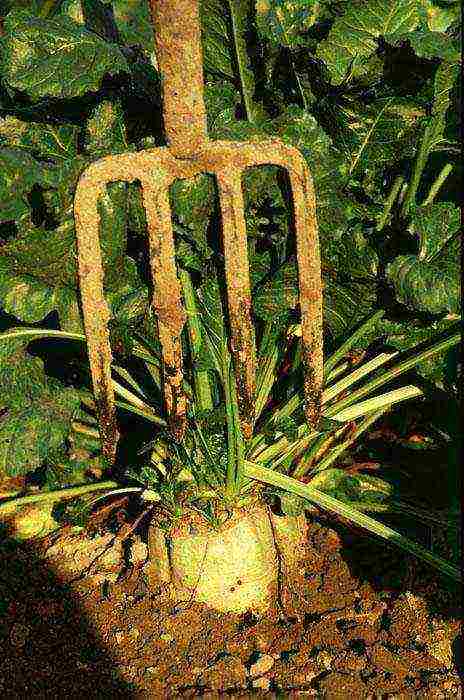 Fodder beets, the photos of which farmers love to take, thus capturing the results of their labor, are removed from the beds in early October, before the first frost. Harvest by digging in the fruits with a shovel or pitchfork. For the purposes of long-term storage, fodder beets are cleaned of adhered soil and tops and stored in earthen pits or cellars at a temperature of 3 to 5 degrees.
Fodder beets, the photos of which farmers love to take, thus capturing the results of their labor, are removed from the beds in early October, before the first frost. Harvest by digging in the fruits with a shovel or pitchfork. For the purposes of long-term storage, fodder beets are cleaned of adhered soil and tops and stored in earthen pits or cellars at a temperature of 3 to 5 degrees. Knowing not only what fodder beets look like, but also how to grow a successful crop of this vegetable, any farmer can make wonderful reserves of fodder for the winter. In addition, in cold weather this valuable and useful culture will give animals real pleasure.
Knowing not only what fodder beets look like, but also how to grow a successful crop of this vegetable, any farmer can make wonderful reserves of fodder for the winter. In addition, in cold weather this valuable and useful culture will give animals real pleasure.
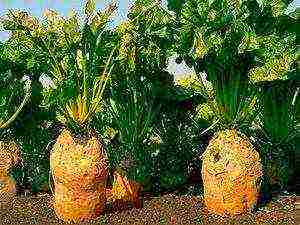
Fodder beets are cultivated in many regions of our country and are considered one of the most productive agricultural plants in fodder production, not only on an industrial scale, but also in private households. Root crops are perfectly eaten by agricultural animals - pigs, rabbits, chickens, as well as cattle.
Fodder beets in the diet of cows make it possible to increase milk yield up to 5000 kg per year, as it has milk-producing properties. This article will focus on the features of growing fodder beets, its most popular varieties.
The history of the emergence of fodder beet
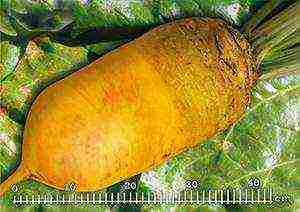
The progenitor of fodder beet, like its counterparts - table and sugar, is the wild beet of India and the Far East. Since time immemorial, people have used the tops of wild beetroot for food and as a medicine. One of the earliest references to beetroot can be found in the list of plants in the Babylonian gardens of King Merodach-Baladan, which dates back to the 8th century BC.
In the Middle Ages, root beet forms dominated. In the 16-17 centuries, Western Europe - France, Holland, Germany - became the center of chard cultivation in order to provide the population of growing cities with food and developing animal husbandry with fodder. In Russia, beetroot at the same time becomes a nearby plant and is cultivated everywhere. In the twentieth century, fodder beets have become a recognized leader in the production of food crops for animals and spread to all continents.
Interesting: Hippocrates in his medical writings gives more than ten recipes where beets are mentioned as an ingredient and are considered a healing dish for patients.
Popular varieties of fodder beets
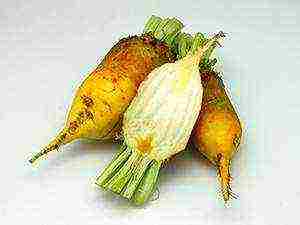
Fodder beet Eckendorf yellow
Eckendorf yellow - the variety created by Russian breeders is highly productive, the yield is stable and amounts to 1000 - 1500 c / ha, mid-season - the time from emergence to the start of harvesting is 140-155 days. The fruit of Ekendorf yellow beet is small in weight, does not exceed 1.6 - 2.0 kg, buried in the ground by a third of its length.
A pale yellow root crop with a gray head, cylindrical in shape. The pulp is white with a high content of juice and dry matter up to 12%. Culture has undeniable advantages:
- low demands on the quality of the soil;
- cold resistance;
- increased resistance to shooting;
- evenness of the root crop;
- excellent feeding properties.
Eckendorf yellow is stored for a long time without damage to the fruit. Tsentaur poly (Polish selection) is a multi-sprout, semi-sugar variety. The harvesting campaign can be started in 145-160 days, so this type belongs to late-maturing plants. White oval root crops weighing up to 2 kg have no lateral branches at all.
The shallow root groove minimizes soil contamination, although there are 2/3 of the root in the soil. Centaur poly perfectly tolerates drought, and its resistance to cercosporium disease and flowering is very high. Nutritional value is represented not only by fruits with a yield of up to 1100 c / ha, but also powerful nutritious tops, the gross yield of which is 380 c / ha. The perspective of the variety is also added by the duration of storage (until the end of May) with minimal losses in warehouses with a low temperature (+4 - 0 degrees Celsius).
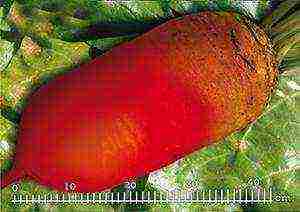
Fodder beet Record poly
Poly record - a multi-seeded mid-season hybrid, the growing season is 118-123 days. Unlike its counterparts, the massive (up to 5 kg) cylindrical root crop of this variety is very little buried in the soil. Great for manual cleaning. The color of the smooth skin of the root is from red (bottom part) to pink (from ground level to foliage).
It is the owner of erect little spreading tops and pale pink almost white flesh. The yield is quite high and amounts to 1000-1250 c / ha. The variety is responsive to fertilization, resistant to diseases and shooting, well stored.
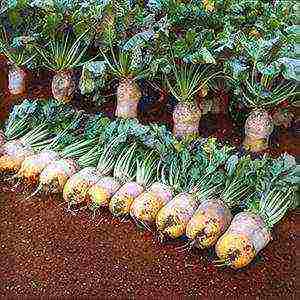
Ursus Poli
Ursus poly - large-fruited (up to 6 kg), multi-sprout fodder beets of Polish selection. The period from sowing to technical ripeness is 123-135 days.
The cylindrical fruit is distinguished by its bright orange color and creamy, juice-rich pulp. The deepening of the root into the soil is not great (40%), therefore, during harvesting, the root crop is slightly contaminated with soil.
From one hectare of the area, commodity producers collect up to 1250 centners of beets. The variety prefers fertile soil and is responsive to fertilization.
One kg of fruit contains up to 14% dry matter and about 7-8 g of protein. The keeping quality of the crop is high and storage in cool rooms can be carried out until February without losing nutritional value.
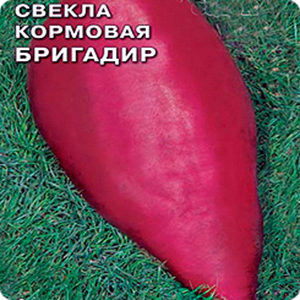
Beet fodder Brigadier
Foreman - fodder beet of German selection, belongs to the polyploid species. Mid-season variety - the growing season ranges from 108 to 118 days. The foreman has a high yield - up to 1500 kg / ha. The root crop is large (weight about 3 kg), cylindrical-elongated, its surface is smooth, olive-orange in color. The pulp of the fruit is yellow-white with a significant content of sugars and dry matter. The feed produced from beets is juicy and has excellent taste quality. A distinctive feature of the brand is:
- increased marketability;
- long keeping quality;
- drought immunity.
For your information: the most intensive beets are poured with a decrease in the length of daylight hours.

Beet variety Lada
Lada (Selection of the Scientific Research Center of the National Academy of Sciences of Belarus for Agriculture) - one-sprout variety with high yield characteristics. Fruits are powerful, cylindrical-oval in shape with a pointed base. Some specimens reach a mass of 25 kg and are submerged in the ground for a third or half of their length. The skin of the root vegetable has a pinkish-greenish color, and the dense flesh is white and very juicy.
The normative yield of the variety is in the range of 1100-1250 c / ha, and in some farms record rates of collection of rhizomes were recorded - 1750 c / ha. The tops are preserved and grow until the very harvest. Variety Lada is a little blooming, not vulnerable to diseases during growth and rot in tubers.

Milan fodder beet
Milan - single-seeded, semi-sugar simple hybrid, widespread in the Central Black Earth region. The oval-shaped fruit is deeply buried in the soil (more than half), its aboveground part is colored olive, and the soil part is white.
The pulp contains up to 13% sugar. The optimal yield is 784 c / ha, but in the presence of fertile soils and correct cultivation, it reaches the level of 1400 c / ha.
Differs in high dry matter content in the fruit, resistance to cyclosporosis, excellent keeping quality during prolonged storage.
Growing technology
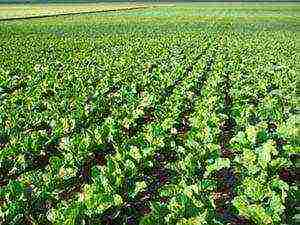
Beet growing technology is a simple process. To obtain a high yield, a number of rules must be observed:
- beets are best planted after crops such as rye, wheat, potatoes, perennial grasses or legumes. After them, there are no diseases and pests characteristic of beets in the field;
- the soil for fodder beets is prepared in advance and should be fertile, relatively dense, preferably with a neutral reaction. To provoke the growth of weeds, immediately after the predecessors, the fields are loosened and milled, and in the spring the fields are only harrowed and leveled for uniform seed placement. Also, in the fall, organic matter is introduced (peat-manure compost or rotted manure) and potash and phosphorus mineral fertilizers are embedded in the soil;
- The sowing campaign of fodder beets begins in early April, when the soil warms up to 6-8 degrees Celsius to a depth of 7-8 cm. ... Seeds are embedded in the ground to a depth of 3-4 cm at a distance of 15-20 cm from each other. Read more about planting beets in spring here;
- caring for fodder beet crops consists in loosening the soil, thinning the plants, removing weeds and feeding. After the emergence of seedlings, the first loosening of the row spacings is carried out, and after 8-10 days it is repeated. In the phase of closing the tops, the last loosening is carried out with the introduction of fertilizers. In arid regions, irrigation / watering of crops is carried out, if necessary;
- harvesting is carried out manually or mechanically in October-November. You can store root crops in the conditions of farms in the field in piles, covering for the winter with three to five layers of straw. In industrial production, the harvested beets are stored in vegetable stores at a temperature of 0-5 degrees.
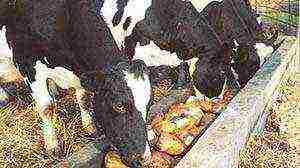
Fodder beets are an important component in the diet of farm animals. It contains a large amount of easily digestible carbohydrates, proteins, vitamins that have a beneficial effect on milk production and provide the livestock body with energy.
In addition, the juicy beet tops serves as an auxiliary source of feed, both fresh and silage. The agrotechnical significance of beets is also great - they are an excellent precursor for subsequent agricultural crops, increasing the productivity of crop rotations.
We suggest you watch a video on how to plant fodder beets correctly:
Rate the article
(
estimates, average:
out of 5)

